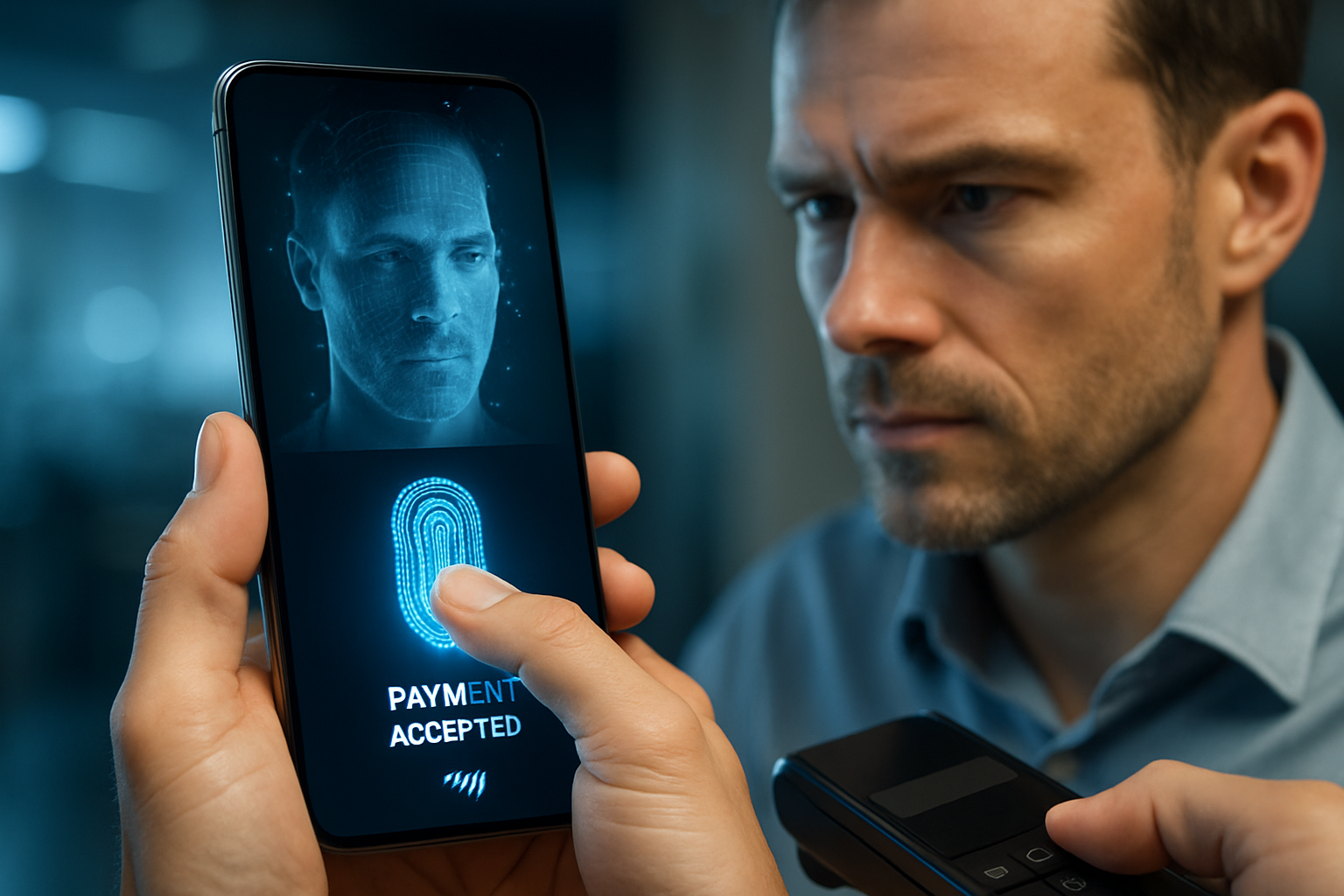"Spearheading the Future: The Rise of Biometric Payment Technology"
Introduction: In a world where convenience is king, the race for seamless transactions has taken a new turn with the advent of biometric payment technology. This article delves into the intricacies of this innovative solution, its historical context, present developments, and future implications.

The History of Biometric Payment Technology
The concept of biometric payment technology is not new. It dates back to the late 1990s when fingerprint recognition was first introduced. However, it was not until the early 2010s that it was applied to payment technologies, primarily due to advancements in smartphone technology and increased security needs in digital transactions.
The Modern Landscape of Biometric Payments
Fast forward to today, biometric payment technology has evolved well beyond fingerprints. It now encompasses facial recognition, voice ID, iris scanning, and even vein pattern recognition. Companies such as Apple and Samsung have been at the forefront of this revolution, integrating biometric features into their mobile devices for secure and user-friendly payment solutions.
The Influence of Biometric Payments on the Market
Biometric payment technology’s impact on the market is undeniable. As per recent studies, the global biometric payment market size was valued at USD 4.17 billion in 2020 and is expected to grow at a compound annual growth rate (CAGR) of 26.8% from 2021 to 2028. This growth is fueled by an increasing demand for secure and swift payment transactions, particularly in the wake of the global pandemic that has accelerated the shift towards contactless payments.
Future Prospects of Biometric Payments
The future of biometric payments is looking bright. With advancements in artificial intelligence and machine learning, biometric systems are expected to become more accurate and reliable. Moreover, as biometric technology becomes more mainstream, it’s predicted that we’ll see more integration of these systems into everyday devices, making biometric payments even more accessible and widespread.
The Potential Challenges and Solutions
However, like any emerging technology, biometric payment technology is not without its challenges. Privacy concerns and the potential for data breaches are significant hurdles to overcome. However, with the development of advanced encryption methods and strict data protection regulations, these concerns can be mitigated. Moreover, ongoing research and development in this field are expected to further bolster the security and reliability of biometric payment systems.
In conclusion, biometric payment technology is poised to revolutionize the way we transact, offering a balance of convenience and security that is unrivaled by traditional payment methods. As we continue to innovate and improve upon this technology, we can look forward to a future of seamless, secure, and speedy transactions.





